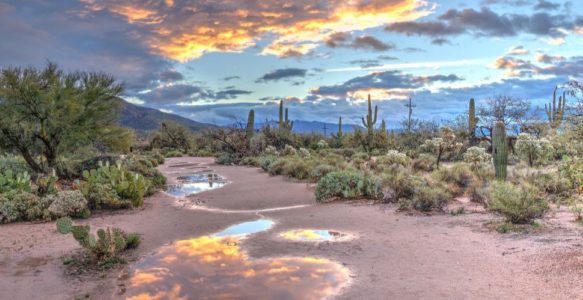By Matt Sedlar and Hayley Brown
Arizona Capitol Times
The federal government just reached a historic deal with California, Arizona, and Nevada to provide cities, irrigation districts, and tribal governments with around $1.2 billion to temporarily use less water from the Colorado River. This is great news for states along the Colorado River, which now have more time to come up with longer-term solutions for the ongoing drought crisis. In Arizona, however, these solutions will require unpopular political decisions – and there isn’t much time to enact them.
One problem is Arizona’s ballooning population. Census estimates from 2022 show five of the 15 fastest-growing large cities or towns were in Arizona. Queen Creek and Buckeye experienced population increases of 8.9 and 8.6%, respectively, between July 2020 and July 2021. Phoenix had the second-largest numeric change in population (13,224) in the country, and Goodyear crossed the 100,000 population mark in 2021.
But there’s that pesky problem of water. While Arizona receives 36% of its water from the Colorado River, it also receives 41% from groundwater. A recent decision by state officials to limit construction, including withdrawing approval for some projects, recognizes that development could outpace available water in those communities. Residential populations typically use less water than agriculture does, but with the latter expanding as well, these groups are being forced to compete with one another for dwindling supply.
The state passed the Groundwater Management Act in 1980, which requires any new development project to demonstrate sufficient water supply to sustain residents for at least 100 years. However, a report from Arizona State University’s Kyl Center for Water Policy found loopholes, including grandfathered rights for some communities to pump groundwater in perpetuity. The law also only covered the most populous regions of the state at the time, leaving large swathes unaffected by the restrictions. As sprawling population growth increasingly encroaches on once-rural parts of Arizona, the omissions in the groundwater legislation become more glaring. Legislation aimed at closing some of these loopholes has struggled to gain traction. That’s terrible news for Arizonans.
The good news is that Arizona will receive money from the federal government to solve this problem. The new Colorado River deal includes money from the Inflation Reduction Act (IRA) to pay farmers, Native American tribes, cities and others to voluntarily forgo their water supplies. The IRA sets aside $71 million for drought resiliency projects, including expanding access to water through groundwater storage, throughout the West – $5 million of which goes toward the Maricopa-Stanfield Irrigation and Drainage District, which serves Phoenix.
But there is much more to do. In the Kyl Center report, senior research fellow Kathleen Ferris suggests states and communities invest in mechanisms to reduce groundwater use, while encouraging those with grandfathered rights to transition to renewable supplies.
Taking that one step further, the state needs to update its goals to reflect the current science around climate change. The Groundwater Management Act’s promise of a water supply for at least 100 years is based on old science and data, and we need new criteria to prove that the 100-year supplies are still sustainable. The state of Arizona must also do more to regulate private use of state lands, since nearly 13% of land in Arizona is held in state trust. Ultimately, Arizona must encourage conservation-minded approaches in agriculture, including the use of greywater for irrigation and a shift toward less water-intensive crops.
Finally, conversations about climate change must take into account the needs and expertise of Indigenous people. Arizona has one of the largest Native American populations in the US, and is home to 22 federally-recognized tribes. A 2021 study found that the lands to which Native Americans were forced to migrate tended to be more resource-starved and more vulnerable to climate change. Tribal governments were actively involved in this year’s river deal negotiations with the federal government, a long-overdue departure from past deals. It is crucial that state and local efforts are likewise undertaken in collaboration with —and not at the expense of — native communities.
The deal brokered by the federal government and the recent decision by state officials are positive steps, but more must be done. Some of that work may be politically unpalatable, but Arizona has to put its people before corporate development and agricultural interests.



